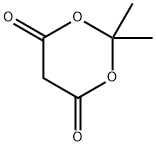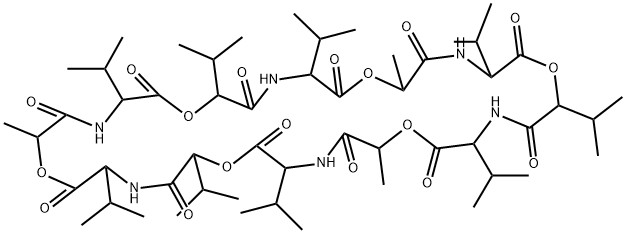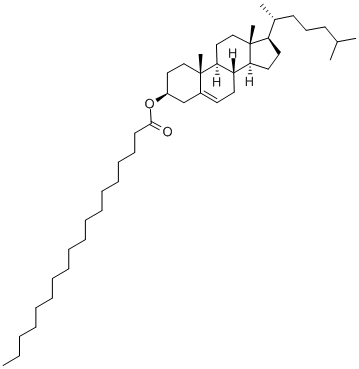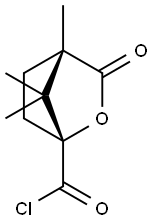ISOPROPYL PROPIONATE
- CAS NO.:637-78-5
- Empirical Formula: C6H12O2
- Molecular Weight: 116.16
- MDL number: MFCD00051553
- EINECS: 211-300-8
- SAFETY DATA SHEET (SDS)
- Update Date: 2024-07-01 10:01:33

What is ISOPROPYL PROPIONATE?
Description
Isopropyl propionate has a bittersweet taste reminiscent of plum. May be synthesized by direct esterification in benzene solution and in the presence of p-toluenesulfonic acid.
Chemical properties
Isopropyl propionate has a bittersweet taste reminiscent of plum.
Occurrence
Reported found in raspberry, currant, kumquat peel oil, papaya and plum brandy
The Uses of ISOPROPYL PROPIONATE
Isopropyl propionate is probably not used in perfumes. It finds some use in flavor compositions, mainly in fruit complexes, “tutti-frutti’’-types, Rum imitation, etc. It produces great “lift” to the flavor and is quite compatible with most fruit flavors. The concentration used is about 10 to 50 ppm in the finished product.
Preparation
By direct esterification in benzene solution and in the presence of p-toluenesulfonic acid
Definition
ChEBI: Isopropyl propionate is an isopropyl ester. It is functionally related to a propionic acid.
Taste threshold values
Taste characteristics at 20 ppm: fruity, berry with a slight bubble gum nuance
General Description
A colorless liquid. Flash point near 30°F. Boiling point near 280°F. Less dense than water. Vapors heavier than air. Used as a solvent and to make flavorings.
Air & Water Reactions
Highly flammable. Soluble in water.
Reactivity Profile
ISOPROPYL PROPIONATE is an ester. Esters react with acids to liberate heat along with alcohols and acids. Strong oxidizing acids may cause a vigorous reaction that is sufficiently exothermic to ignite the reaction products. Heat is also generated by the interaction of esters with caustic solutions. Flammable hydrogen is generated by mixing esters with alkali metals and hydrides.
Health Hazard
May cause toxic effects if inhaled or absorbed through skin. Inhalation or contact with material may irritate or burn skin and eyes. Fire will produce irritating, corrosive and/or toxic gases. Vapors may cause dizziness or suffocation. Runoff from fire control or dilution water may cause pollution.
Fire Hazard
HIGHLY FLAMMABLE: Will be easily ignited by heat, sparks or flames. Vapors may form explosive mixtures with air. Vapors may travel to source of ignition and flash back. Most vapors are heavier than air. They will spread along ground and collect in low or confined areas (sewers, basements, tanks). Vapor explosion hazard indoors, outdoors or in sewers. Runoff to sewer may create fire or explosion hazard. Containers may explode when heated. Many liquids are lighter than water.
Properties of ISOPROPYL PROPIONATE
| Melting point: | -75.9°C (estimate) |
| Boiling point: | 108-110°C |
| Density | 0,87 g/cm3 |
| refractive index | 1.3885 |
| FEMA | 2959 | ISOPROPYL PROPIONATE |
| Flash point: | 15°C |
| Water Solubility | Slightly soluble in water |
| solubility | 0.5% soluble in water, miscible with alcohol, Propylene glycol and oils. |
| form | clear liquid |
| Specific Gravity | 0.89 |
| color | Colorless to Almost colorless |
| Odor | at 100.00 %. fruity ether sweet pineapple banana |
| Odor Threshold | 0.0041ppm |
| JECFA Number | 306 |
| BRN | 1699921 |
| CAS DataBase Reference | 637-78-5(CAS DataBase Reference) |
| EPA Substance Registry System | Propanoic acid, 1-methylethyl ester (637-78-5) |
Safety information for ISOPROPYL PROPIONATE
| Signal word | Danger |
| Pictogram(s) |
 Flame Flammables GHS02 |
| GHS Hazard Statements |
H225:Flammable liquids |
| Precautionary Statement Codes |
P210:Keep away from heat/sparks/open flames/hot surfaces. — No smoking. P233:Keep container tightly closed. P240:Ground/bond container and receiving equipment. P241:Use explosion-proof electrical/ventilating/lighting/…/equipment. P242:Use only non-sparking tools. P243:Take precautionary measures against static discharge. |
Computed Descriptors for ISOPROPYL PROPIONATE
New Products
4-AMINO-TETRAHYDRO-PYRAN-4-CARBOXYLIC ACID HCL 4-(Dimethylamino)tetrahydro-2H-pyran-4-carbonitrile 4-Aminotetrahydropyran-4-carbonitrile Hydrochloride (R)-3-Aminobutanenitrile Hydrochloride 3-((Dimethylamino)methyl)-5-methylhexan-2-one oxalate 1,4-Dioxa-8-azaspiro[4.5]decane 5-Bromo-2-nitropyridine Nimesulide BP Aceclofenac IP/BP/EP Diclofenac Sodium IP/BP/EP/USP Mefenamic Acid IP/BP/EP/USP Ornidazole IP Diclofenac Potassium THOMAIND PAPER PH 2.0 TO 4.5 1 BOX BUFFER CAPSULE PH 9.2 - 10 CAP SODIUM CHLORIDE 0.1N CVS ALLOXAN MONOHYDRATE 98% PLATINUM 0.5% ON 3 MM ALUMINA PELLETS (TYPE 73) LITHIUM AAS SOLUTION 2-Bromo-1-(bromomethyl)-3-chloro-5-nitrobenzene 2-Bromo-3-nitroaniline N-(3-Hydroxypropyl)-N-methylacetamide 3-Bromo-6-chloropyridazine 4-ethyl-3-nitrobenzoic acidRelated products of tetrahydrofuran








You may like
-
 Iso Propyl Propionate 637-78-5 99%View Details
Iso Propyl Propionate 637-78-5 99%View Details
637-78-5 -
 Isopropyl Propionate CAS 637-78-5View Details
Isopropyl Propionate CAS 637-78-5View Details
637-78-5 -
 Isopropyl propionate CAS 637-78-5View Details
Isopropyl propionate CAS 637-78-5View Details
637-78-5 -
 1823368-42-8 98%View Details
1823368-42-8 98%View Details
1823368-42-8 -
 2-(3-(tert-butyl)phenoxy)-2-methylpropanoic acid 1307449-08-6 98%View Details
2-(3-(tert-butyl)phenoxy)-2-methylpropanoic acid 1307449-08-6 98%View Details
1307449-08-6 -
 Ethyl 3-(furan-2-yl)-3-hydroxypropanoate 25408-95-1 98%View Details
Ethyl 3-(furan-2-yl)-3-hydroxypropanoate 25408-95-1 98%View Details
25408-95-1 -
 2-Chloro-5-fluoro-1-methoxy-3-methylbenzene 98%View Details
2-Chloro-5-fluoro-1-methoxy-3-methylbenzene 98%View Details
1805639-70-6 -
 Lithium ClavulanateView Details
Lithium ClavulanateView Details
61177-44-4